What if we told you there is a way to monetize your passion for your brand? You can shift the focus from why people need your product to why you use your own product, and this shift will actually drive more sales in the long run.
Attraction marketing is about being unapologetically yourself and selling without being pushy. It’s also about creating and sharing genuine first-hand experiences. Let’s find out what attraction marketing really is, how to create an attraction marketing strategy, what works, and what doesn’t.
Content:
- What is attraction marketing?
- How to use attraction marketing and what mistakes to avoid
- How do you create an attraction marketing strategy?
- Step 1. Start with your audience
- Step 2. Choose your platform
- Step 3. Define freebies you can use to attract and capture leads
- Step 4. Construct the user’s way through your sales funnel
- How will attraction marketing help your business?
- Marketing techniques to attract customers
- YouTube
- Personal blog
- Calling it a day
What is attraction marketing?
Attraction marketing is a type of inbound marketing based on storytelling and personal experience. You attract users by showing your product, physical or intellectual, in action instead of keeping it under glass. Attraction marketing means presenting your product wrapped in your real personal success story. By sharing your knowledge and valuable insights, you bring people in and make them want to stay.
Basically, you need to become — wait for it — a dedicated influencer, a brand evangelist preaching about your own business. Sounds like an extremely time-consuming activity, right? Not if you consider how much money, time, and effort you’d need to put into finding the right person to do that for you. You’d need to educate them about your product and its mission, and who knows that stuff better than you?
Hiring someone and paying them to tell your own story isn’t going to come across as authentic, and recent surveys suggest that brand authenticity has never been more important:
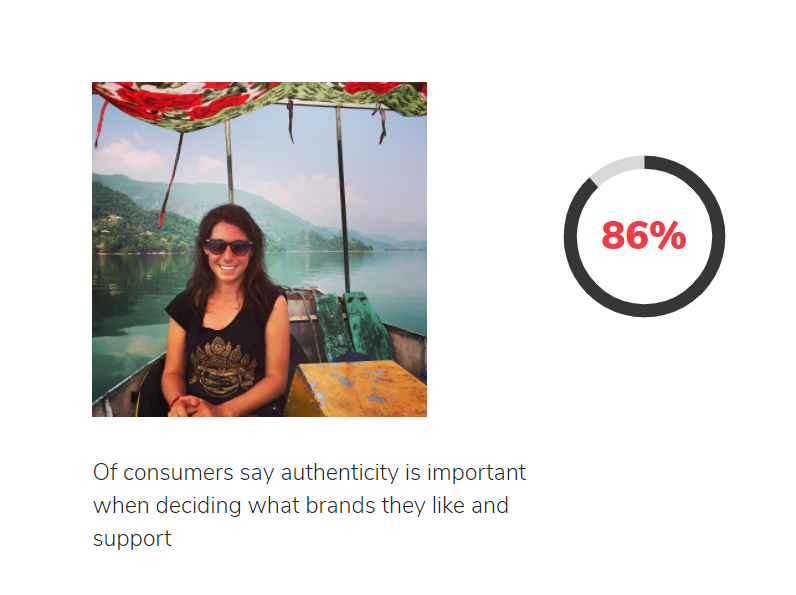
Another survey showed that 81% of the consumers surveyed said that they need to be able to trust a brand before buying from them. You’ll be able to build this trust by showing how your product or service actually improves your everyday life. The benefits of this approach are pretty self-evident: you attract users who are more likely to become repeat clients and even brand advocates.
How to use attraction marketing and what mistakes to avoid
Here are some attraction marketing tips and the best practices you can adopt to grab and hold people’s attention.
Start with value. Always think about your target audience. What problem do they want to solve? Use your expertise and share the practical recommendations, strategies, and hacks that your audience is looking for. Put your content out there and let them learn about the benefits of your solution.
Earn your audience’s attention. Always deliver on what you promise to prove that your main goal is to establish a long-lasting relationship with your subscribers, don’t just sell your product and disappear. To give an example, if you announce a free minicourse, it should stay free.
Establish your thought leadership. Make your voice louder by collaborating with other experts in your field and producing unique content that will bring you thousands of clicks, external links, and subscriptions.
Create a customer-facing strategy. Make your content relatable by talking about your own struggle and the way your product helps you overcome the same challenges your audience is dealing with. Explain how you’re going to make their lives easier.
Say no to generic content. Commit to creating your own videos, podcasts, or blog posts. Use your real photo or recognizable illustrations. Keep it personalized, and you’ll bridge the gap between your brand and your target audience.
Stay open to interactions. This process is not going to work if your blog is all about spreading knowledge and expertise, but you ignore your readers’ comments and suggestions. How about going live to answer their questions and let them know you’re a real person?
Settle for a limited number of channels instead of chasing them all. At first, you’ll spend a significant amount of time just planning and producing content, let alone promoting it. Spreading yourself thin isn’t the best strategy here.
Learn how to delegate. Don’t try to squeeze everything into your demanding schedule. Instead, hire a graphic designer or a motion designer to give your content a professional look and an editor to create dazzling gems out of your disheveled drafts. This way, you’ll preserve authenticity but free yourself from manual work.
Commit to consistency and post every week. Stay on your users’ radar no matter what. Prepare content in advance and post it in digestible portions. This is especially true for Instagram because users just won’t see your content if you post sporadically.
Stay true to yourself and your product. Use real facts and stats. If your audience expects full authenticity from you, you need to live up to their expectations. Treat your subscribers the way you treat your friends — with care, respect, and honesty.
Know where you’re going. The lines between your personal and commercial social media profiles can become blurry, but the KPIs must stay clear. If you don’t see any growth after several months, pause, and re-evaluate your strategy.
How do you create an attraction marketing strategy?
We’ll not only run through the essential steps but also give you additional attraction marketing tips to help you put it all together. Here is a not-so-secret formula for you to use: sit down, list all the benefits of your product, and start building your attraction marketing strategy around them.
Step 1. Start with your audience
Describe your ideal buyer personas and their pain points. Who are you creating your content for? What are they interested in? What bothers them? Once you’ve defined these pain points, turn them into keywords to use in your blog copy, titles, and video descriptions. This will help you kill two birds with one stone: you create catchy, relatable content and boost your SEO performance.
And here is an example of a buyer persona that might be interested in music-making:
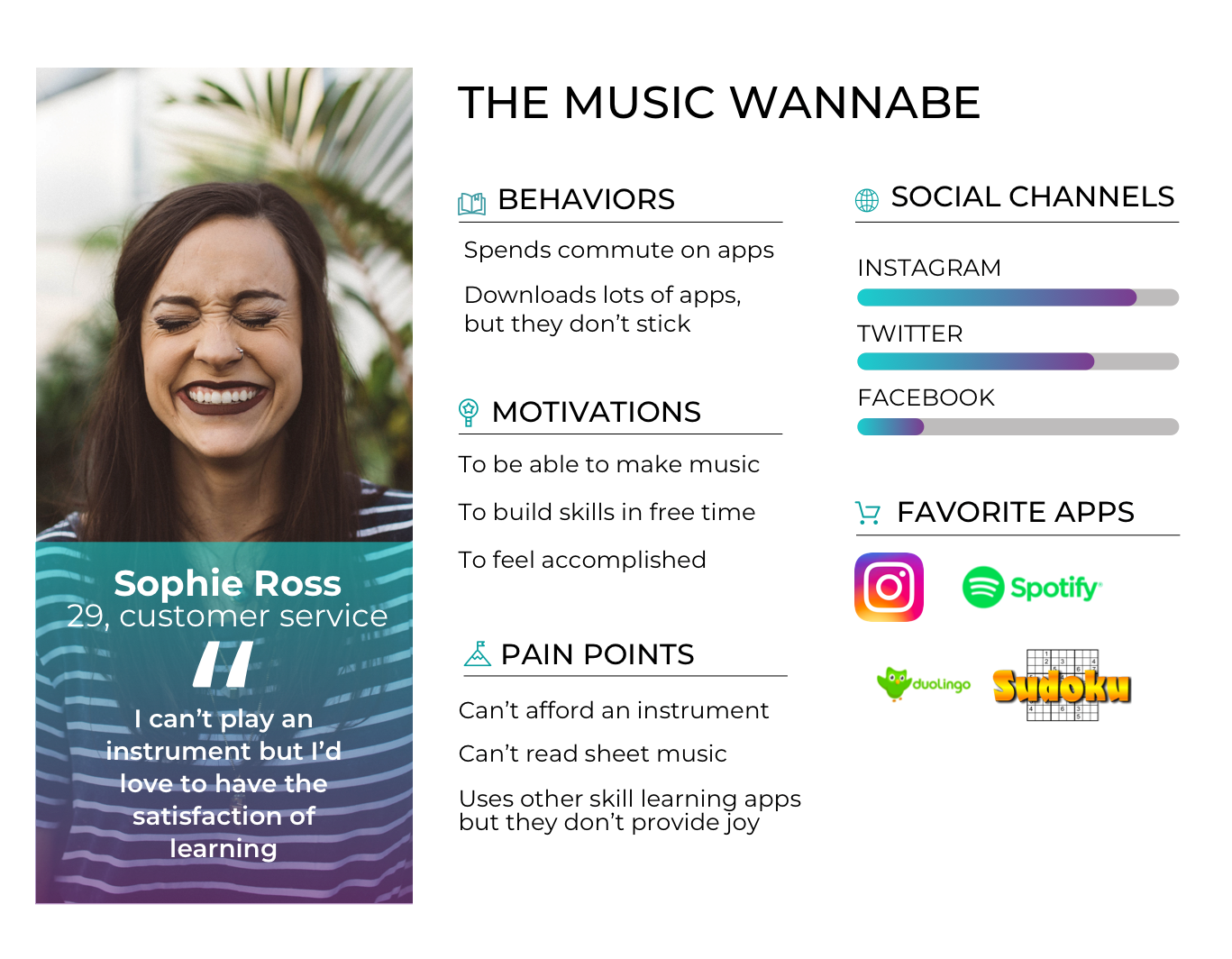
Step 2. Choose your platform
This should be a platform where your audience is already hanging out and communicating. The task of luring people to another medium is too ambitious to accomplish. So is omnipresence, especially when you’re just starting out and your resources are limited.
There are plenty of ways you can attract users. Let’s review the best types of content for each platform:
- Instagram — high-quality visual content, infographics, stories, carousels, and IGTV.
- Twitter — simple infographics, links to your blog posts, and open questions to spark conversations.
- YouTube — 5–15 minute videos where you discuss problems your audience wants to solve, lead Q&A sessions, answer popular questions.
- Email — video emails, interactive emails, curated emails, and recommendation emails.
- Personal blog — long reads with relevant stats and imagery.
Step 3. Define freebies you can use to attract and capture leads
Make a certain part of your educational content gated and available only after a subscription. Once again, you need to attract without being too salesy, so make it feel like the subscription is a way to join a club of like-minded people.
We’ll give you an example. This is how Tim Ferris, an entrepreneur, author, and podcaster, seamlessly attracts his audience:
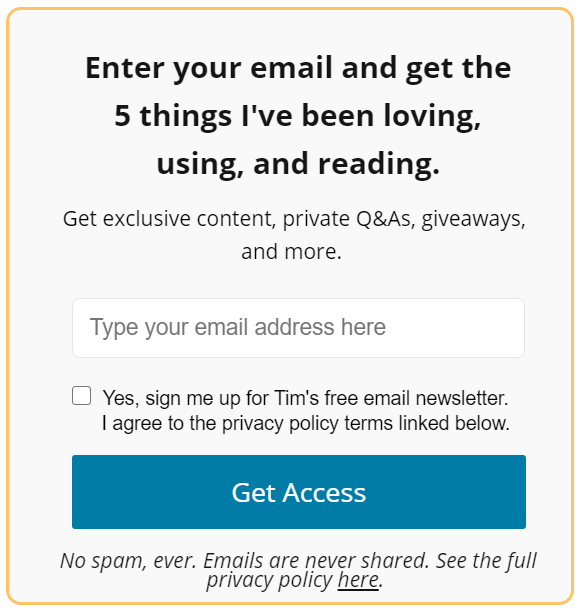
Lead-capturing forms will help you grow your contact list and implement a lead-nurturing strategy as the second step after attracting a new audience to your resource. These lead magnets come in many shapes and forms:
- eBooks;
- weekly classes;
- creative workshops;
- webinars;
- curated weekly emails;
- guides;
- checklists;
- podcasts;
- private consultations.
Step 4. Construct the user’s way through your sales funnel
Your content should not only bring value but also convert visitors. What would this customer’s journey be like? Shape clear CTAs for every stage of the funnel and create limited offers to stimulate purchasing decisions.
Let’s say, you work as a career change consultant, and you’re building your personal brand. The stages of your attraction marketing funnel might look like this:
- A user comes across your content on the internet and decides to give your resource a read.
- A bit later, this user subscribes to receive more exclusive content from you.
- Their interest continues to grow, and you can present an initial offer — for example, to sign up for your free webinar.
- Now that the user trusts you and your brand more, it’s time to deliver your main offer — for example, to book a personal coaching session with you.
How will attraction marketing help your business?
Thanks to attraction marketing strategies, you’ll be able to skip bypassers and win the attention of your core audience. Receiving valuable content from you will give them the feeling that you won’t disappear after they purchase from you. Basically, you’re sending a simple message: “I understand your needs, and I’ll be within your reach. My brand is trustworthy, and it’s here to stay.”
But there are even more advantages hiding under the blanket:
- You keep your audience warm and engaged.
- Your brand appears more real and worth remembering.
- You create a sustainable online presence.
- You always have relevant content ideas up your sleeve because you tell your own story.
This approach is the opposite of cold calls and emails. You have all the chances to leave your competitors in the dust by replacing aggressive sales pitching with meaningful content. And here is some evidence of that:

As you can see from this diagram, consumers think many brands do not deserve their full trust because they concentrate too much on sales and don’t provide enough value. It’s your chance to turn the situation upside down and win over that hesitating part of your audience.
Marketing techniques to attract customers
We’ve already mentioned that attraction marketing has a lot to do with storytelling. Now, let’s look at how prominent professionals in the fields of marketing, design, sales, and personal development use attraction marketing techniques to tell their own stories.
Ann Handley is a keynote business speaker, Wall Street Journal best-selling author, and marketer. She is one of the people shaping modern marketing. It’s no surprise that her emails stand out and have attracted more than 50,000 subscribers. She’s speaking from her rich experience and keeping her audience motivated and engaged.
As part of her attraction marketing strategy, Ann shares examples of good writing, useful ideas, and fresh links every two weeks. She also sends helpful downloadable content and gives exclusive tips. Her emails are very conversational and easy to read despite their length:
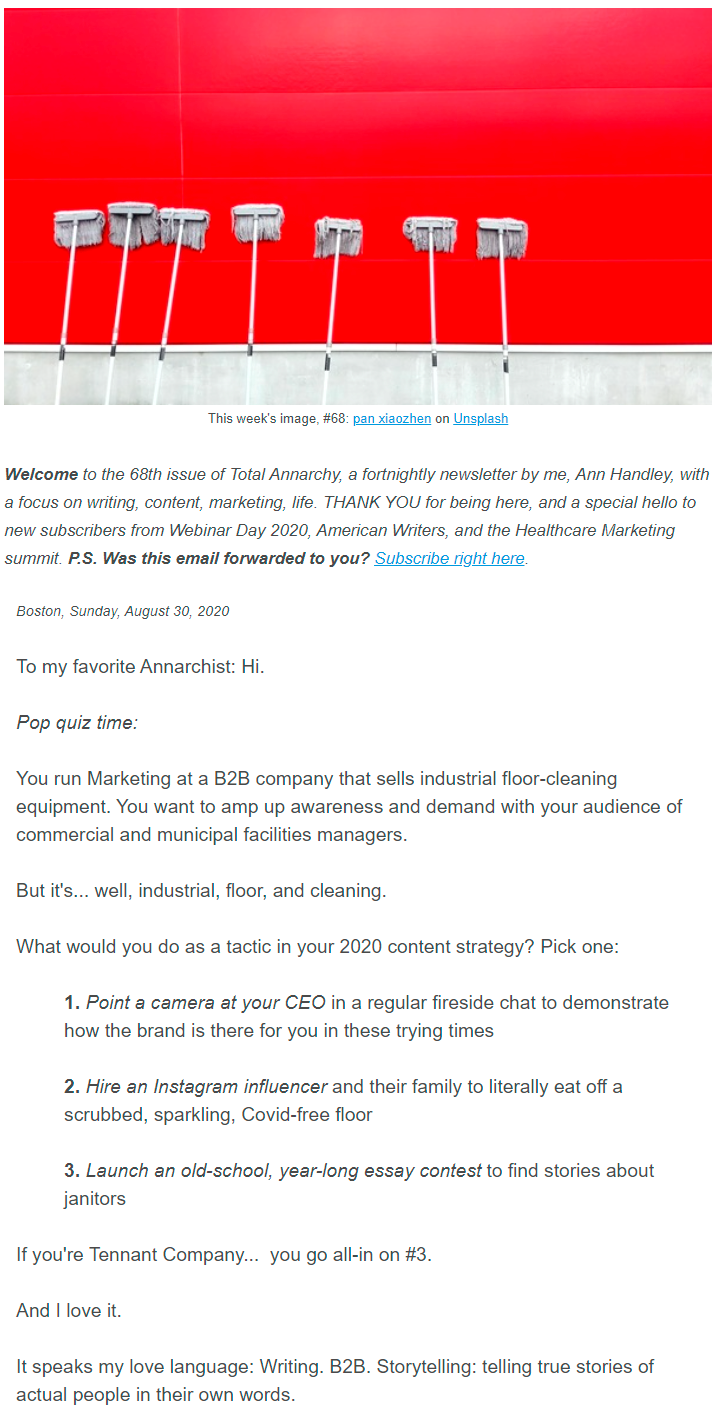
YouTube
Chris Do is a designer and entrepreneur teaching thousands of creatives how to earn money doing what they love. His sprawling online community is YouTube-based, but he also uses many other resources to share his knowledge.
It is a semi-personal brand because there are many other professionals involved in the process of content creation, but Chris Do is the mastermind responsible for all of that. You won’t find a single piece of content here that was created just to sell his courses or books. “Value first” is the main principle behind this channel:
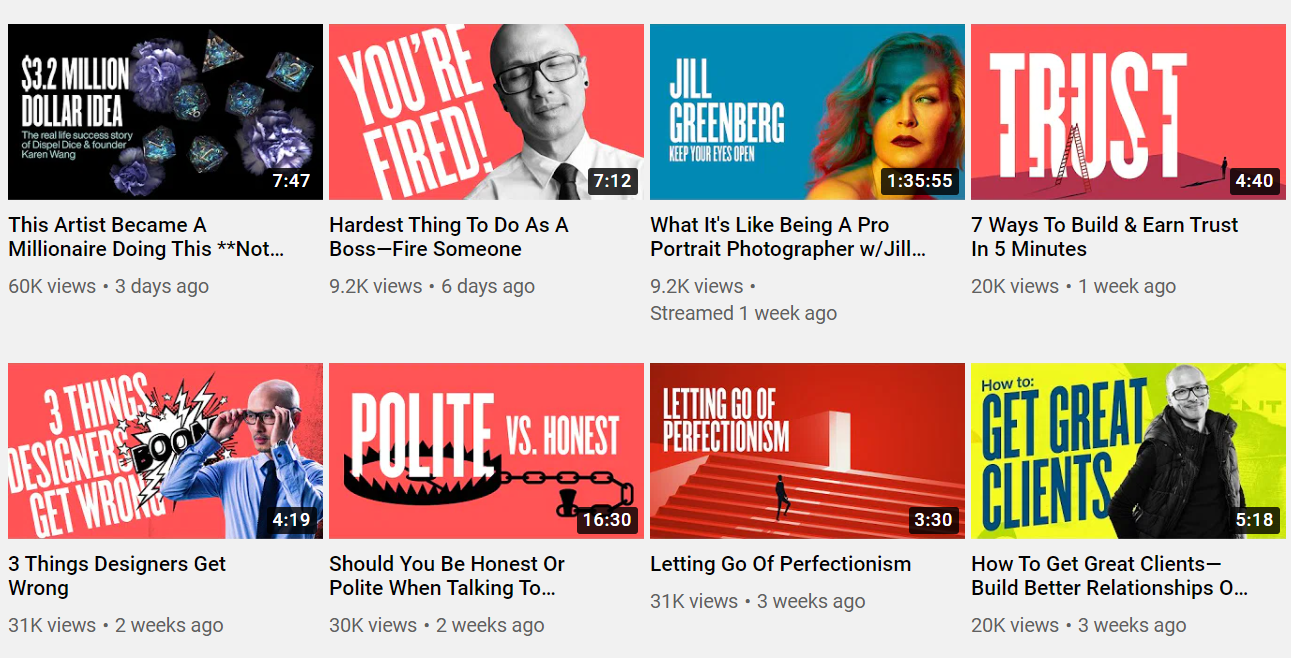
Notice how easy it is to scan the catchy thumbnails of the videos and find exactly what you’re interested in. Adopt the same practice for your channel, and you’ll make life easier for your subscribers.
Amy Porterfield is an online marketing educator helping entrepreneurs grow their audiences, run digital courses, and create profitable webinars. Her Instagram account is the epitome of attraction marketing in action. She constantly shares insightful content, her personal recommendations, and lists with her followers:
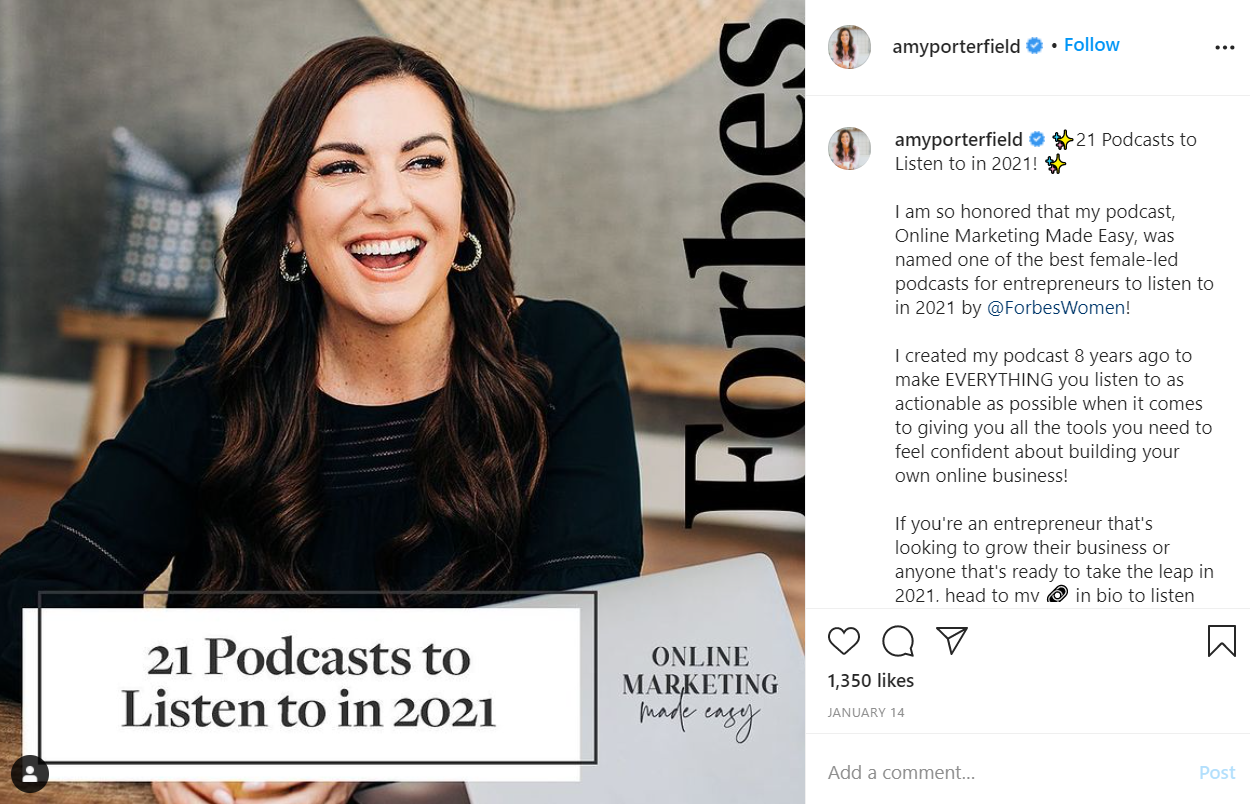
Pay attention to how well her content is visually curated. She also posts regularly, diversifies her feed with different types of content, and actively interacts with her audience in the comment section.
Personal blog
Lilach Bullock is an entrepreneur, business success coach, and passionate blogger helping other business owners and marketers turn their passion into profit. She uses her blog as a medium for sharing helpful tips and insights she gained while working with clients from all walks of life.
But her attraction marketing strategy goes beyond that: Lilach even offers free strategy calls to deliver more value to her audience. In her blog, she also shares her personal success story and her experience, making it all more relatable. Her website is also full of lead magnets and all sorts of freebies.
This is an example of how you can stay 100% authentic while also promoting your product:
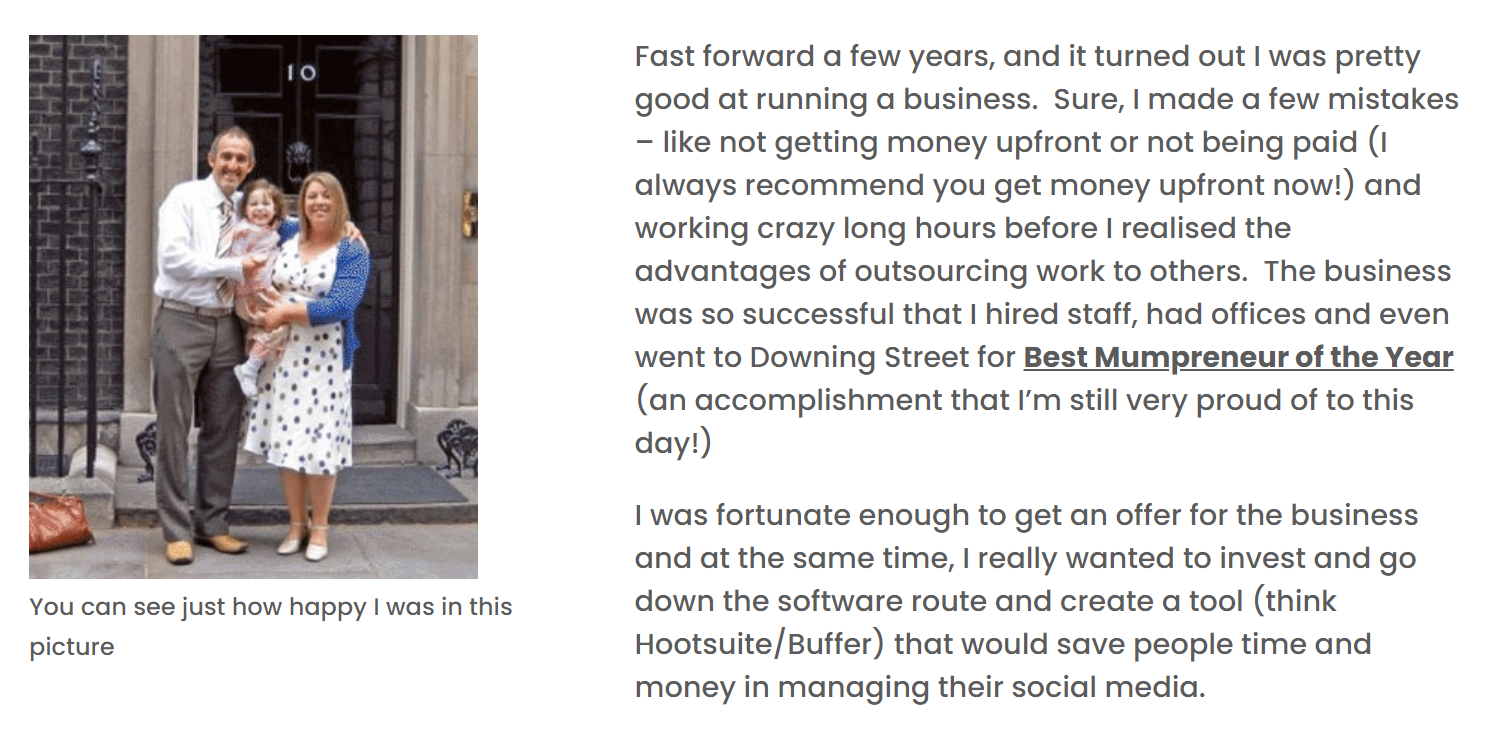
Adam Grant is an organizational psychologist, author, and public speaker. His bestseller “Give and Take” promotes an idea similar to that of attraction marketing — the practice of giving of your time and attention, without expecting something in return, as a key strategy in professional advancement.
Adam is exceptionally prolific at producing valuable content — he is the host of the TED podcast WorkLife and the creator of the “Granted” curated newsletter. Likewise, he is active on social media:
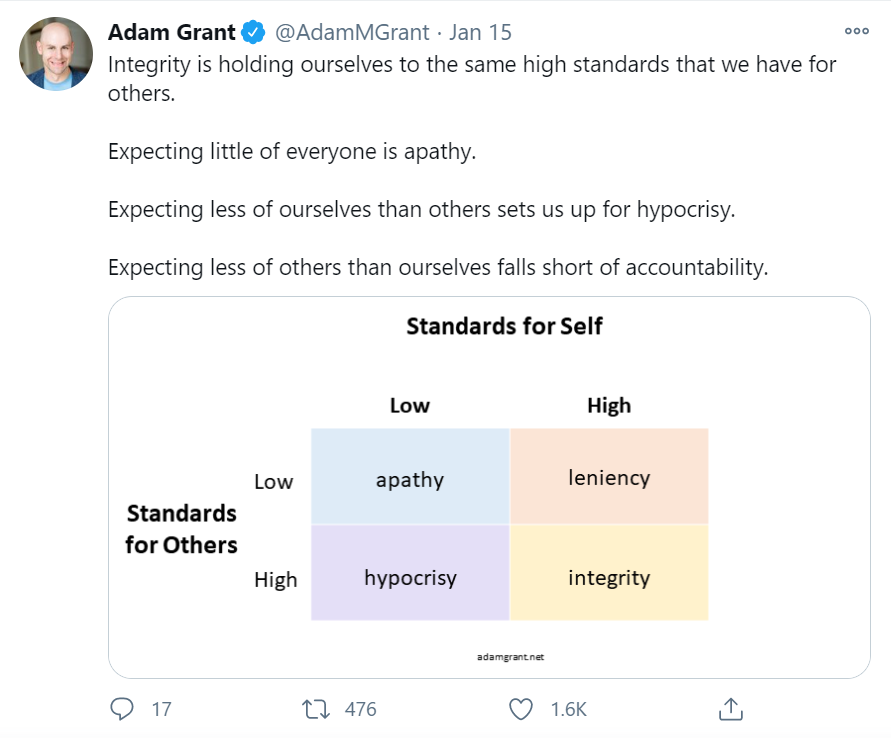
We’ve chosen his Twitter as a good example of how you can announce your blog posts, share your thoughts, and ideas while staying within the very limited number of characters.
Calling it a day
There are a lot of pieces in the puzzle called attraction marketing. As you’ve just learned, it’s the opposite of direct pitching, haunting new leads, and sending cold emails. Nevertheless, we truly believe that it’s useful to know both sides and be able to combine different methods.
Attraction marketing strategies may help you grow your mailing list, but it depends on you how well these new leads are going to stick. To gradually guide your audience through the different stages of your sales funnel, send automated lead-nurturing emails with the help of SendPulse. You don’t need any special skills to get started! Create emails using customizable templates and test different versions to find the most engaging and converting formula for you.








